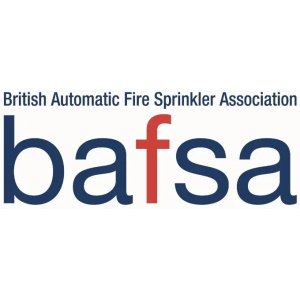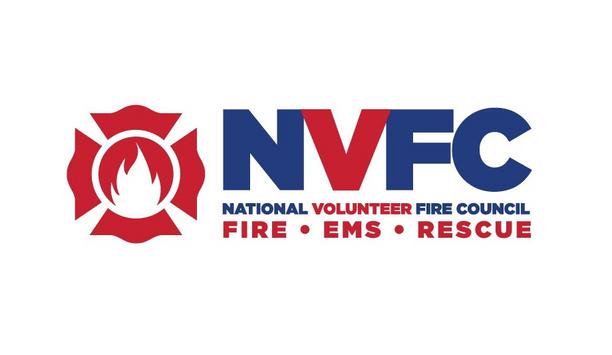Luton Airport suffered a huge fire in its Terminal 2 multi-story car park. The fire tore through the recently modernized car park, causing a significant structural collapse, severe damage to more than 1,200 cars, and serious disruption to flights.
The car park was part of a significant £160m redevelopment project in December 2018. Despite this modernization, the fire and rescue service revealed the car park was not equipped with fire sprinklers.
A 12-hour blaze
The blaze started at about 9 pm on Tuesday 10th October and was finally extinguished at 9 am the next morning. More than 100 firefighters, 15 fire engines, and three specialist aerial appliances from the surrounding counties worked through the night to put the fire out.
There is an ongoing investigation into the exact cause of the fire, but Bedfordshire Fire and Rescue Service confirmed the fire started accidentally due to a vehicle fault with a diesel-powered car.
No serious injuries
A fire of this size and severity is a stark reminder about fire safety and why fire suppression is so important
Thankfully, there were no serious injuries, but three firefighters and a member of airport staff were taken to hospital suffering from the effects of smoke inhalation. A further firefighter was treated at the scene by the paramedics. A fire of this size and severity is a stark reminder about fire safety and why fire suppression is so important.
Bedfordshire’s Chief Fire Officer Andy Hopkinson told media outlets that, “Sprinklers may have made a positive impact on this incident.” It is only after the event that the airport is considering fitting its existing, and any future, car parks with sprinklers.
The importance of fire suppression
As a multidisciplinary service provider of advanced fire protection, detection, and suppression systems, we know how valuable a fire suppression system can be.
Current legislation in the Approved Document B (fire safety) Volume 2: Buildings other than dwellings states that “car parks are not normally expected to be fitted with sprinklers”.
fire suppression solutions
If the car park had sprinklers in place, they would have certainly helped to contain the fire and minimize damage to passengers’ vehicles and the car park itself.
Let’s take a look at some of the fire suppression solutions all multi-story buildings should contain and how these systems can help protect people, property, and assets.
Automatic sprinklers
Each sprinkler is independent, and only the sprinklers nearest the heat source will activate
Fire sprinklers such as dry pipe and wet pipe systems have an excellent record of reliability, with an activation rate of 94%. Research shows that they are 99% effective in controlling or limiting the spread of fires and in many situations, do not require firefighters to enter the fire area.
Each sprinkler is independent, and only the sprinklers nearest the heat source will activate. Typically, a sprinkler uses 1/100th of the amount of water that a fire service hose would discharge.
Dry and wet risers
Another important fire suppression method for multi-story car parks is dry and wet risers. This fire suppression method is essential in buildings with multiple floors and where access can be limited or compartmentation is an issue.
Dry and wet risers are designed to allow fire and rescue services to take a water supply into a building without having to run fire hoses throughout the building.
Fire extinguishers
According to the BBC News report on the Luton car park fire, a lady attempted to retrieve a nearby fire extinguisher, but it “was used”. Despite her best efforts to find another extinguisher from a different floor, the fire had already become unmanageable.
Ensuring there are an adequate number of extinguishers and devices filled with the appropriate extinguishing agent is essential for tackling small fires.
Foam and powder extinguishers
Having regular fire extinguisher servicing and maintenance ensures these active fire solutions are in good working order
Two extinguishers suitable for tackling vehicle fires are foam and powder. Foam extinguishers can be used on flammable liquid fires like petrol, but they aren’t suitable for electrical fires. Powder extinguishers, on the other hand, are a great all-rounder and are safe to use on spilled flammable liquids and electrical equipment.
Having regular fire extinguisher servicing and maintenance ensures these active fire solutions are in good working order and ready to be used when needed.
History repeating
The Luton Airport car park fire isn’t the first major car park fire in recent times. In 2017, a similar blaze occurred at the Kings Dock multi-story car park in Liverpool. The building was so badly damaged that it had to be demolished.
Following the investigation, fire chiefs recommended installing sprinklers, and during the rebuild of the car park, sprinklers were installed. But Vipond cannot keep waiting for disastrous fires to strike.
Sprinklers installation
Action to protect these buildings and, more importantly, protect lives needs to be taken. And the chief executive of the British Automatic Fire Sprinkler Association (BAFSA), Ali Perry, agrees.
In commentary about the fire Ali Perry said the fire was a “regrettable reminder of why BAFSA continues to call for sprinklers to be fitted in all modern, multi-storey car parks.”
Electrical vehicle fires
He added that “…modern cars are significantly larger and contain much greater amounts of plastic than ever before. They produce larger fires and propagate much faster than was previously possible."
"When electric vehicles catch fire, for example, they can produce intense horizontal flames that may ignite adjacent vehicles and create large conflagrations that can eventually result in structural failure and collapse of the building concerned, putting firefighters at risk and making it difficult to control the fire.”
Updates to FPA Technical Bulletins
Lithium-ion batteries are the predominant type of rechargeable battery used in electric vehicles
The FPA recognizes the increased risk that modern-day vehicles present. Lithium-ion batteries are the predominant type of rechargeable battery used in electric vehicles, and are a fire risk when being charged, particularly if a cell is defective and unable to correctly convert electrical energy into stored chemical energy.
In its RC59: Recommendations for fire safety when charging electric vehicles report, it states that sprinklers provide the best form of active fire protection for enclosed car parks, and sprinkler protection is strongly recommended for enclosed car parks with EV charging points.
Design, installation, and maintenance
The FPA also updated its guidance for anyone involved in the design, installation, and maintenance of automatic sprinkler systems. In September 2022,
The FPA made updates to several of its Technical Bulletin documents, most notably to TB229: LPC Rules for automatic sprinkler installations variations to BS EN 12845 (2015).
LPC Sprinkler Rules for Automatic Sprinkler Installations
The LPC Sprinkler Rules for Automatic Sprinkler Installations is the UK’s most significant sprinkler installation standard which incorporates the full BS EN 12845:2015+A1:2019 standard and related Technical Bulletins.
The FPA has taken precautionary action by enhancing car park classifications from Ordinary Hazard (OH) to High Hazard Process (HHP) in TB229, a change effective from 1st November 2022. This means that car park sprinkler systems will need to be designed and installed in High Hazard Process Group 3.
Time to update legislation
It is as good a time as any to update the legislation and make it mandatory for multi-story car parks
So, with guidance and standards updated, surely it is time to update legislation. The Luton Airport car park fire is a powerful reminder of the damage fires can cause and highlights the role that fire suppression can play in protecting people, property, and assets.
It is as good a time as any to update the legislation and make it mandatory for multi-story car parks to be fitted with fire suppression systems.
First for fire protection
Every building needs to adhere to fire safety regulations, and car parks should be no different. Users can count on Vipond to protect their most valuable assets.
Vipond has full 2D and 3D CAD and BIM level 2 capabilities, allowing them to seamlessly work with architects and other mechanical disciplines, ensuring full and accurate coordination with other building services at the early stages of construction.
BS EN 12845
Vipond is fully compliant with the relevant British Standards, BS EN 12845 – LPC Rules for Automatic Sprinkler Installations 2009.
Vipond LPS 1048-5 level 4 Approved Sprinkler Contractor certification and LPCB certification for gas extinguishing systems give customers further peace of mind that the Loss Prevention Certification Board verifies our systems.















